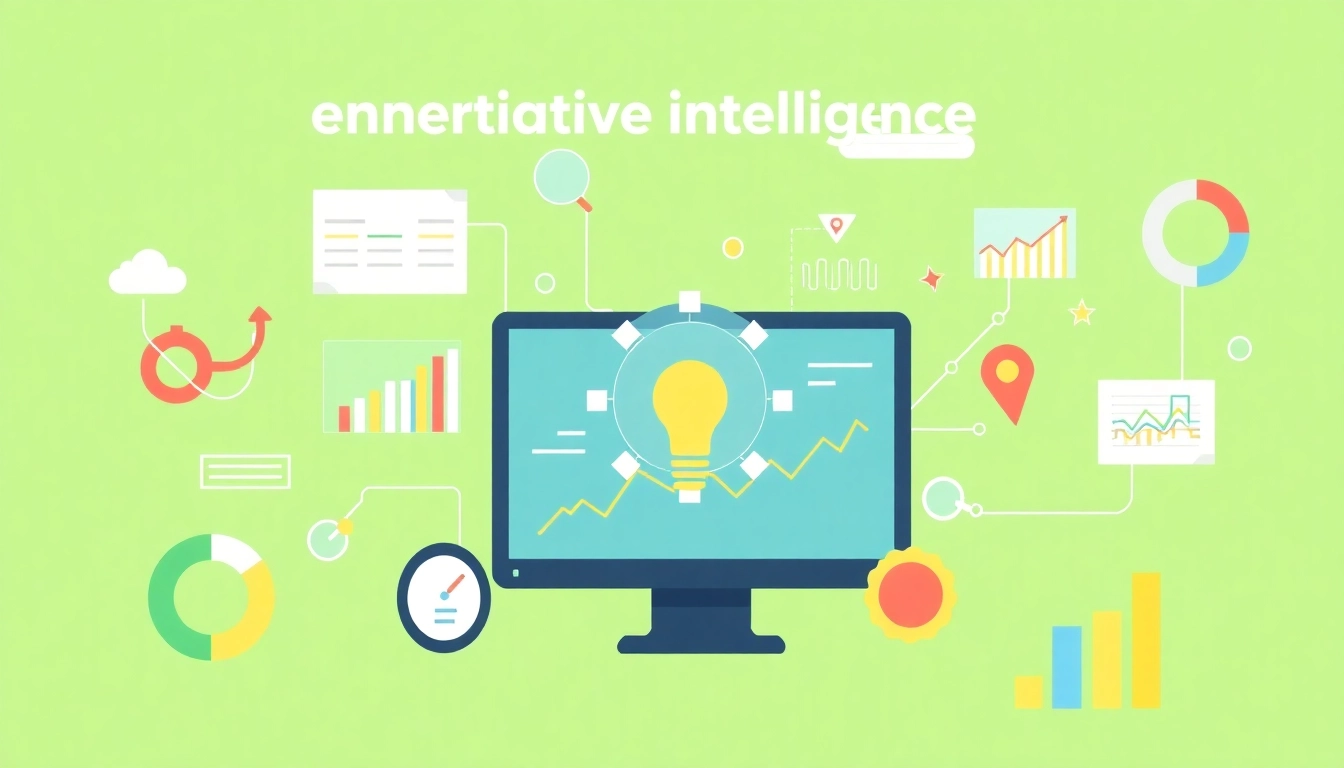Understanding the Importance of Finding Competitor Customers
In the fast-paced realm of business, understanding your competition is crucial for sustained growth and success. One of the key aspects of competitive analysis is identifying your rivals’ customers. This process is not merely about stalking competitors; it entails understanding the market landscape and leveraging that knowledge to enhance your business strategies. Knowing how to find competitor customers can yield priceless insights into market trends, customer preferences, and opportunities for differentiation.
What Does It Mean to Find Competitor Customers?
Finding competitor customers involves researching and analyzing the customer base of other businesses within your industry. This can range from identifying who their customers are, what needs these customers have, and how competitors address these needs. It goes beyond surface-level insights; successful competitor customer analysis can reveal hidden opportunities for your own business.
The Benefits of Identifying Competitor Customer Bases
- Market Awareness: By understanding who your competitors serve, you can identify gaps in the market and potential customer segments that are currently underserved.
- Improved Marketing Strategies: Insights from competitor customers can guide your messaging, product development, and promotional strategies to better meet market demands.
- Customer Retention: Knowing what makes customers choose competitors can inform your customer retention strategies, providing insights into ways to keep your customers engaged and loyal.
- Benchmarking: Competitor analysis allows you to benchmark your business against rivals, providing a clearer picture of where you stand in relation to market leaders.
Common Challenges in Competitive Customer Analysis
While the benefits are clear, the journey to identifying competitor customers is fraught with challenges. Common hurdles include:
- Data Access: Not all competitor information is readily available, and some data might require specific tools or subscriptions to access.
- Information Overload: Sifting through vast amounts of data can be overwhelming. It’s crucial to stay focused on relevant insights.
- Analysis Paralysis: With numerous metrics to consider, knowing which benchmarks to prioritize can be challenging.
- Dynamic Market Conditions: Competitor strategies can shift rapidly, leading to outdated insights if not monitored regularly.
Effective Methods to Find Competitor Customers
Having established the importance of identifying competitor customers, the next step involves using effective methods to gather relevant data.
Using Online Tools and Technology
Online tools play a vital role in competitive analysis. Here are several key technologies to consider:
- SEO Tools: Platforms like SEMrush, Ahrefs, and Moz can provide insights into competitor traffic sources and the keywords driving visitors to their sites.
- Social Listening Tools: Services such as Brandwatch or Hootsuite can track conversations around your competitors on social media, revealing customer sentiment and engagement patterns.
- Customer Review Analyses: Websites like Trustpilot and Yelp offer reviews that can give you clues about competitor customers’ likes and dislikes.
Leveraging Social Media Insights
Social media platforms are treasure troves of information about competitor customers. Here are some strategies to tap into this resource:
- Follower Analysis: Observe the followers of your competitors’ social media accounts. Understanding the demographics, interests, and engagement levels of these followers can provide insights into their customer base.
- Content Engagement: Analyze what types of posts generate the most engagement on competitors’ profiles to identify topics that resonate with their audience.
- Hashtag Research: Scrutinizing the hashtags used in competitors’ posts can reveal the communities and conversations they are part of, highlighting potential customer segments.
Networking and Industry Events Strategies
Engaging directly with industry peers and attending events can offer firsthand insights into competitor customers:
- Conferences and Trade Shows: These events provide opportunities to network and talk directly with competitors and potential customers.
- Panel Discussions: Participating in or attending panels can provide insights into competitor strategies and customer needs.
- Industry Reports: Gathering data from surveys conducted at these events can yield valuable information about competitor customer bases and preferences.
Data Collection Techniques for Competitor Customer Analysis
With strategies in place to find competitor customers, it’s essential to focus on effective data collection techniques to validate your findings.
Surveys and Customer Interviews
One of the most effective methods of gathering insights about competitor customers is through direct feedback:
- Surveys: Develop surveys that target relevant demographics, asking questions about brand preferences and customer satisfaction with competitors.
- Interviews: Conducting one-on-one customer interviews can provide deeper insights into customer motivations and experience with competitors.
- Incentives: Offering incentives for participation can increase response rates and yield more significant data.
Analyzing Publicly Available Data
Publicly accessible data can provide a wealth of information about competitors and their customers:
- Government Data: Regulatory filings, market reports, and economic statistics can provide macro-level insights.
- Company Websites: Analyzing competitor websites can reveal information about their customer engagement strategies and target demographics.
- Social Proof: Tracking competitors’ customer reviews and testimonials can offer insights into their customer demographics and preferences.
Utilizing Market Research Reports
Accessing industry-specific market research reports can produce rich insights:
- Commercial Research Firms: Engaging firms like IBISWorld or Nielsen can provide comprehensive analyses of industry trends and competitor landscapes.
- Academic Studies: University research can also yield peer-reviewed studies that include consumer behavior insights relevant to your competitors.
Case Studies: Success in Finding Competitor Customers
To understand the power of finding competitor customers, let’s examine some industry-specific examples where businesses effectively leveraged this strategy.
Industry-Specific Examples
Successful companies across various sectors have utilized competitor customer analysis to catapult growth and improve their strategies:
- Retail Sector: A clothing retailer analyzed competitor customer reviews to adjust its sizing and fit, ultimately reducing return rates and increasing sales.
- Food Industry: A restaurant chain tapped into competitor social media engagement to enhance its menu offerings, resulting in a significant uptick in customer visits.
- Technology Services: A software company conducted in-depth surveys of competitors’ users, discovering pain points that they promptly addressed in their product launch.
Lessons Learned from Successful Brands
The following are key takeaways from successful implementations of competitor customer analysis:
- Adaptability: Brands that proactively adapt to the insights gained from competitor analysis often see sustained improvement in their offerings.
- Focus on Value: Winning companies consistently emphasize adding value to their customers based on insights gathered from competitor customers.
- Continuous Learning: Ongoing analysis allows brands to keep pace with changing customer preferences and make timely adjustments.
Common Pitfalls to Avoid
In the quest to find competitor customers, some organizations encounter roadblocks:
- Overgeneralization: Relying too heavily on broad data can lead to incorrect assumptions about who your competitors’ customers are.
- Neglecting Your Unique Selling Proposition (USP): It’s essential to maintain clear focus on what sets your offerings apart, rather than just imitating competitors.
- Infrequent Updates: Markets evolve rapidly, and failing to regularly refresh insights can lead to strategies based on outdated information.
Implementing Your Findings for Strategic Growth
Finally, having gathered valuable insights into competitor customers, it’s imperative to effectively implement these findings into your business strategy.
Integrating Insights into Marketing Strategies
Leverage insights gained from competitor customer analysis to inform your marketing initiatives:
- Targeted Campaigns: Develop marketing campaigns specifically tailored to the customer segments identified through competitor analysis.
- Content Strategy: Use the understanding of customer behavior gleaned from competitors to guide your content marketing efforts, ensuring they resonate with your desired audience.
- Brand Positioning: Reposition your brand based on gaps identified in the competitive landscape, ensuring that it stays relevant and appealing.
Measuring Impact and Performance
Once strategies are implemented, it’s vital to measure their impact effectively:
- KPIs and Metrics: Establish clear KPIs to assess the effectiveness of the strategies based on insights from competitor customer analysis.
- Customer Feedback: Regularly solicit customer feedback to gauge how well the changes are meeting their expectations.
- Iterate: Be prepared to tweak strategies based on performance data to ensure continuous improvement.
Long-Term Strategies for Ongoing Analysis
Competitor analysis shouldn’t be a one-time task but an ongoing process:
- Regularly Scheduled Reviews: Set periodic reviews to assess competitive positioning and customer trends, ensuring no valuable insights are overlooked.
- Stay Current: Keep an eye on new entrants and changes in consumer preferences, adapting your strategies as needed.
- Collaboration: Encourage cross-department collaboration around competitive analysis findings to craft a unified approach to addressing customer needs.



